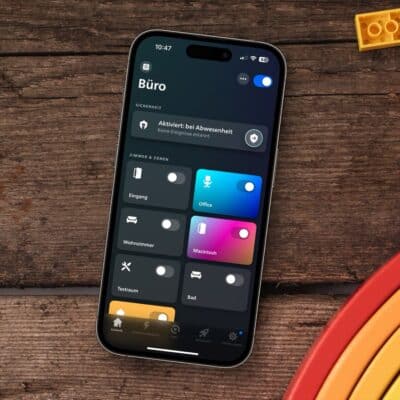On Tuesday, Philips Hue unveiled some smaller innovations for the start of 2024. These include the Philips Hue Dymera wall light, designed for indoor and outdoor use, which can shine upwards and downwards in different colours. Philips Hue advertises this feature as “Multi-Source Light Technology” – a pretty impressive name for a feature that we already know from the Philips Hue Ensis, for example. Or is there perhaps more to it than that?
I did some research for you before the Hue Dymera test device arrives next week. So what is this “multi-source light technology” all about? “Multi-source light technology enables a new kind of personalisation and improved user-friendliness,” says Philips Hue. “The Dymera’s individual light sources are automatically grouped together in the app so that they can be controlled in a perfectly harmonised way.”
I was already able to take a first look at the display in the app, unfortunately without a usable screenshot. The two Dymera light sources are displayed directly next to each other and are visually connected. Connected is a good key point, by the way.
Hue Dymera is added as one light
The connection with the Hue Bridge is quite simple: when the usual search for new lamps is started, the Hue Dymera is “found” as a single light with several light points. This is very similar to what was already the case with the power strip from a third-party provider. “The devices do not have to be added individually and there is no risk that only a subset will be found. In the Hue app, the light is displayed as a single controllable object that users can control either as a whole or in parts,” explains Philips Hue.
Technically, this is achieved via a “Single Control Board” that uses Zigbee to link several independently controllable light points. It is therefore partly a hardware solution, which also means that existing lamps, such as the Ensis, cannot benefit from the improved display in the app. In addition, the multi-source light technology cannot perform miracles: On the Hue Bridge, the Dymera occupies not one, but two device slots.
Note: This article contains affiliate links. We receive a commission for purchases via these links, which we use to finance this blog. The purchase price remains unchanged for you.






























